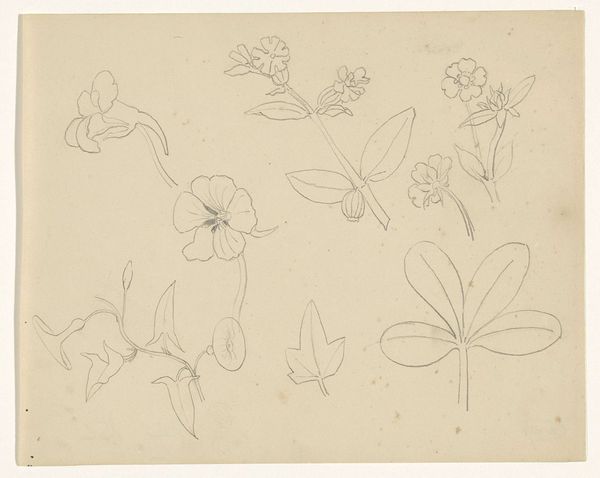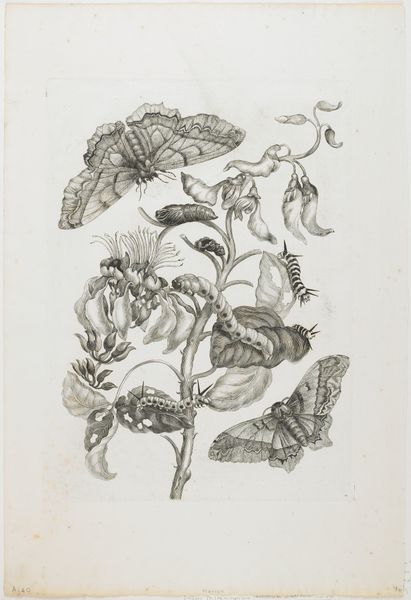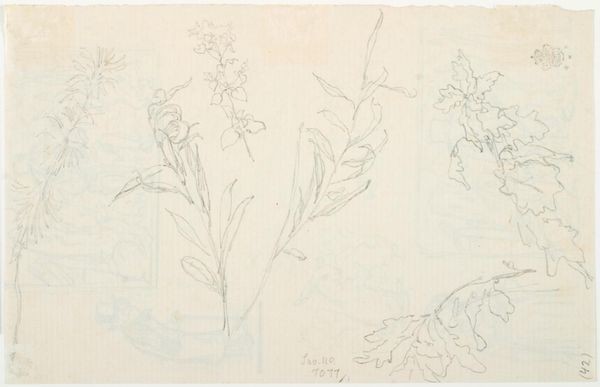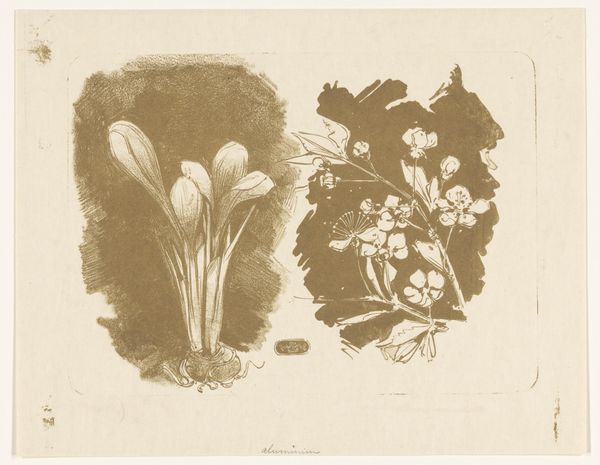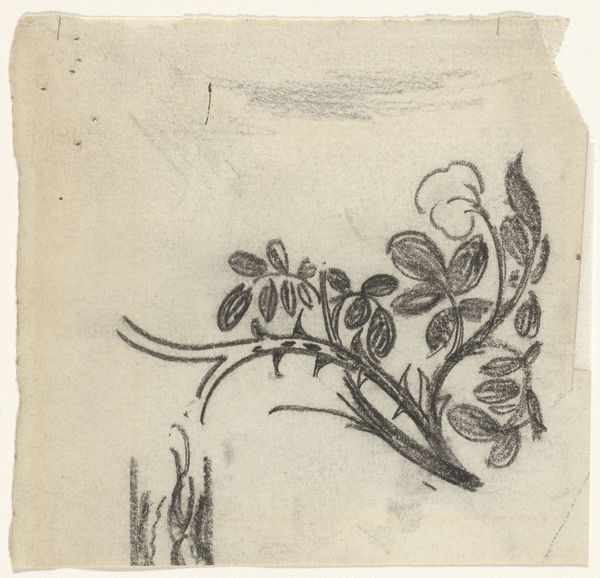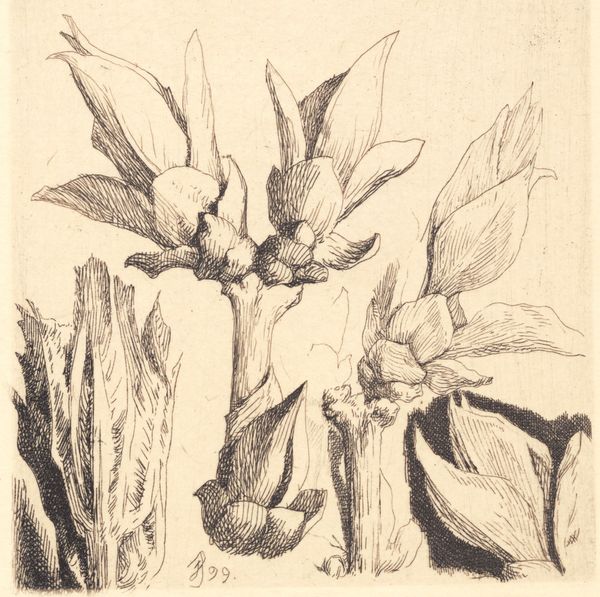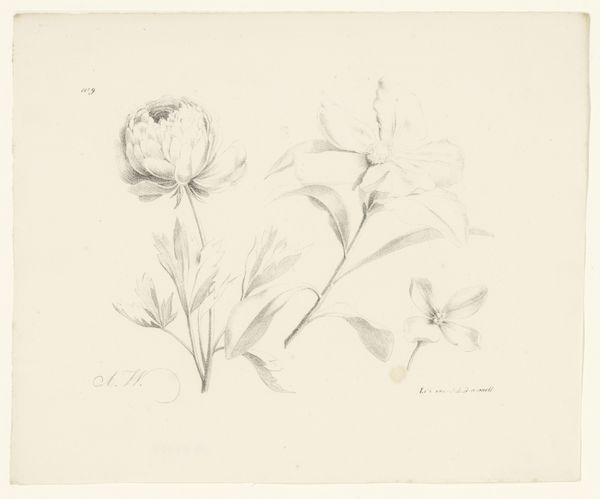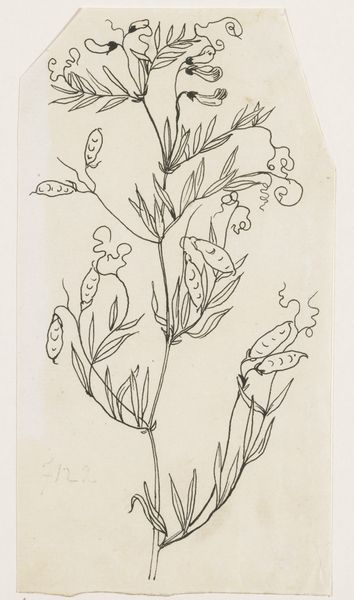
drawing, ink, pencil
#
drawing
#
ink drawing
#
pencil sketch
#
etching
#
ink
#
pencil
#
line
#
realism
Dimensions: height 233 mm, width 245 mm
Copyright: Rijks Museum: Open Domain
Editor: This is "Takje met knoppen," a drawing using ink and pencil by Carel Adolph Lion Cachet, made sometime between 1874 and 1945. I’m really drawn to the stark contrast between the dark lines and the empty space. How do you interpret the artist's choice of materials and technique? Curator: Well, let’s think about the socio-economic context of drawing as a practice during that time. Pencil and ink, relatively inexpensive and readily available, made artistic creation accessible to a wider range of individuals beyond the elite. Cachet's choice democratizes art-making. Why use fleeting sketches of buds? Is this about access to subject, as well? Editor: That's an interesting perspective. I hadn't thought about it in terms of accessibility. The sketch-like quality makes it feel so immediate. Maybe this work critiques the polished nature of academic painting of the time? Curator: Exactly. It's a study, raw and unrefined. Consider also the labor involved in creating detailed botanical illustrations, typically commissioned by the wealthy. By presenting these as studies, Cachet challenges the established artistic hierarchies that fetishize the pristine and meticulously rendered artwork for only some. What are your thoughts? Editor: It's as though the work highlights the process over the final product. So, this isn’t just a botanical study; it is a statement. The roughness elevates everyday materials into art. Curator: Precisely. It disrupts the notion of art as precious, pushing viewers to consider the social and material conditions behind its production. Editor: I never thought about it that way before. Now I am appreciating the work in terms of artistic consumption in Cachet's time. Thank you! Curator: Absolutely. I will think about that as well, from now on.
Comments
No comments
Be the first to comment and join the conversation on the ultimate creative platform.
